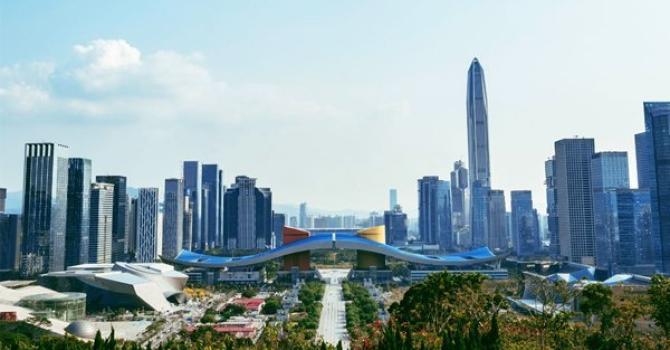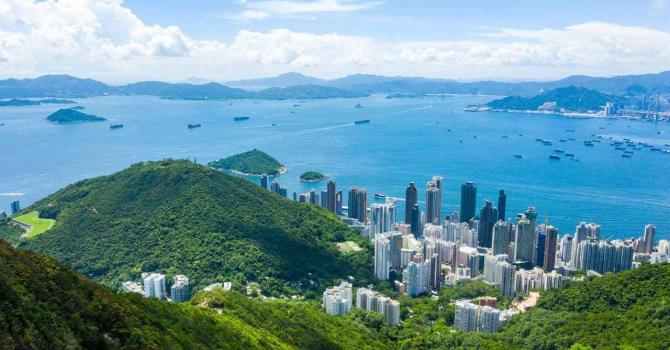Carbon tracker tools show how Hong Kong can aid global climate fight
The Earth is heating up due to carbon emissions from the use of fossil fuels. The challenge is to develop clean energy sources and move away from fossil fuels within the next few decades, to avoid planetary overheating.
Governments around the world have signed up to achieving carbon neutrality within the next few decades. North American and European countries have targeted doing so by 2050, as has Hong Kong, while mainland China is aiming for 2060, and India, 2070.
Achieving carbon neutrality is a tall order. It means arriving at a balance between emitting carbon and absorbing it from the atmosphere in “carbon sinks”. In other words, in the case of the mainland, the carbon it releases into the atmosphere would have to be balanced by an equivalent amount being absorbed by its forests, oceans and soil within its own territory by 2060.
A low-carbon future requires decarbonisation and strengthening ecosystems. It requires sustained efforts over decades. Economies must decarbonise heavy industries and sectors including energy, transport, agriculture and manufacturing, accelerate resource reuse and recycling, and mount massive nature conservation efforts.
The overall aim includes establishing a new corporate governance system in which carbon, environmental and biodiversity accounting takes centre stage. Quite simply, to decarbonise, we must first be able to measure the sources and amounts of our carbon emissions.
Listed companies and banks in many economies, including Hong Kong, are now required or will soon be required to disclose their environmental performance, with carbon being a core component, using emerging international standards on how to measure and disclose the information.
This new governance system based on accounting for emissions is made possible through advancements in data management technology.
This is where Hong Kong has made a small but important contribution. While measuring a company’s direct emissions associated with fuel combustion and the purchase of energy are relatively straightforward, the difficulty arises with emissions that occur in the value chain of a company, such as those of its suppliers – and that often involves many other companies.
Time is of the essence – listed companies and banks following the best international practices will have to disclose not only their own emissions but also those from their supply chains by 2026. Investors who want to make clean investments are also demanding disclosures. This means non-listed companies, many of which are small and medium-sized enterprises (SMEs), are being asked by their listed customers, banks and investors to disclose their carbon emissions.
To tackle the issue, the Green and Sustainable Finance Cross-Agency Steering Group, made up of Hong Kong’s financial services regulators plus relevant policy bureaus, asked the Hong Kong University of Science and Technology to create a carbon calculator and a carbon estimator suitable for use by SMEs to calculate their emissions and benchmark against others.
The vast majority of SMEs are new to carbon disclosure. Thus, the steering group wants Hong Kong to develop a simple system to help them get started and advance over the next few years to disclosing more data.
The two tools, which to my knowledge are the first such tools created with the backing of the authorities, were launched on February 21. While other carbon calculators using generalised data are available, these HKUST-developed tools are unique because they are based on Hong Kong data and some data from the mainland, plus there is a benchmarking function.
Before the launch, a group of SMEs were asked to test the tools and provide feedback and suggestions. They confirmed the tools were easy to use. The question now is how to get SMEs to actually use them.
The SMEs suggested that there must be sustained promotion. This could be done together with the chambers of commerce, industry associations and bodies dealing with SMEs, of which there are many in Hong Kong. Listed companies and banks can also help, since the carbon calculator and estimator can be used by the SMEs in their supply chains.
Another suggestion was to give SMEs an incentive, such as some kind of acknowledgement and recognition, for using the carbon calculator and estimator.
The test group of SMEs also want to see the tools upgraded soon so companies could be segmented into industry types, which would make benchmarking more meaningful, and to include data from other Asian economies.
The steering group has its work cut out to promote the tools. The costs of promotion are likely to be small – the financial secretary would probably not even need to allocate much extra funding to get this done. However, it’s good coordination that holds the key.
This is a test for joined-up government. Who should play the role of coordinator?
In the short term, the steering group could recommend to the financial secretary that the government pay for the promotion of the tools that several SME associations could be tasked with doing. A suitable body should be empowered to provide the recognition SMEs want.
In the longer term, the government should set up a specialised body to make Hong Kong a leader in this new corporate governance system in the climate change era.
Hong Kong should be proud of its modest contribution – it is a first. We should ensure we don’t let it slip because of administrative neglect or misalignment.
Contributed by Prof. Christine Loh. The article was published on SCMP:
https://www.scmp.com/comment/opinion/hong-kong/article/3253366/carbon-tracker-tools-show-how-hong-kong-can-aid-global-climate-fight



